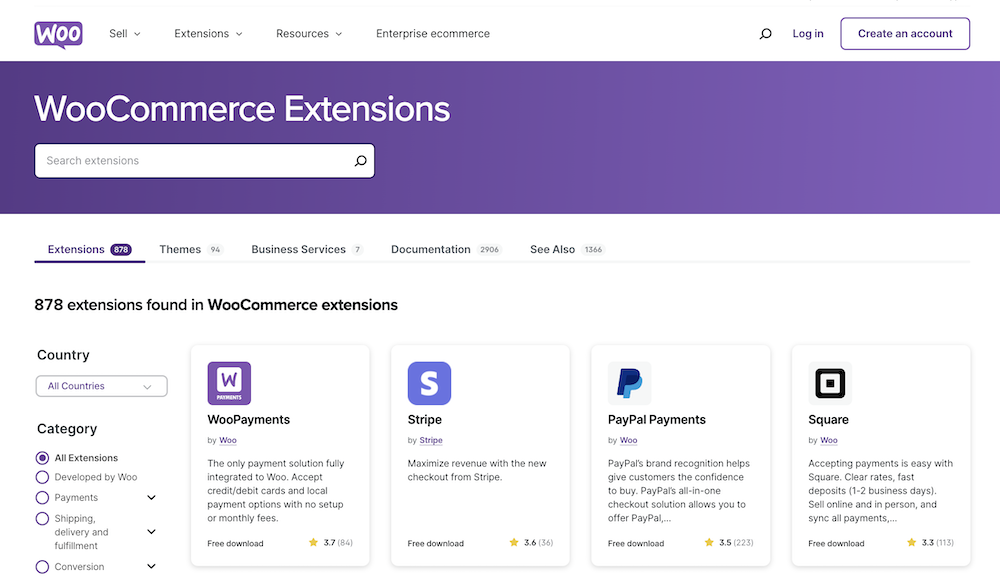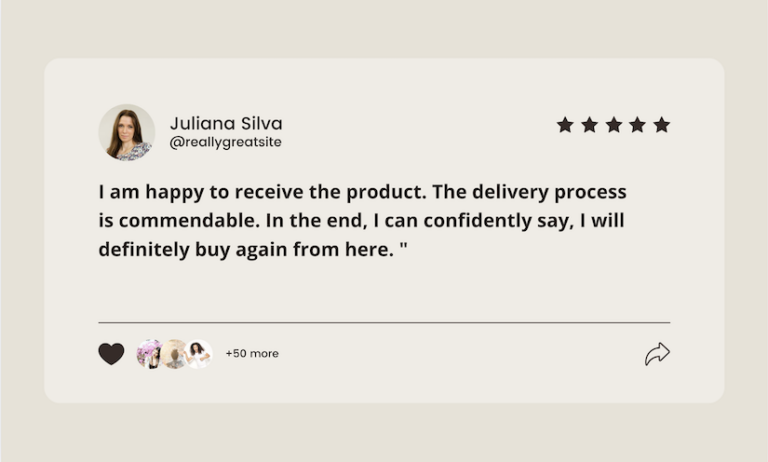Want to build your eCommerce store but need clarification on WooCommerce and Shopify? Explore our detailed cost breakdown of WooCommerce vs Shopify and get a clear idea about what it takes to build an eCommerce store.
When it comes to building an eCommerce store, WooCommerce and Shopify stand out as two of the most popular and robust platforms available today. Both have extensive features, large user bases, and dedicated communities, but deciding between the two often boils down to understanding the costs involved.
Whether you’re a new entrepreneur or a seasoned business owner, getting the complete cost breakdown of WooCommerce and Shopify is essential to making an informed decision.
In this article, we’ll dive deep into the pricing structures, hidden costs, and long-term expenses associated with each platform to help you choose the best option for your online store.
WooCommerce as an eCommerce Platform and Engine
WooCommerce is a powerful and flexible eCommerce platform built on WordPress, making it an ideal choice for those who want full control over their online store. As an open-source solution, WooCommerce allows for extensive customization, giving store owners the ability to tailor everything from product pages to checkout processes. With a wide range of free and premium extensions, you can enhance your store’s functionality, including payment gateways, shipping options, and marketing tools.

Unlike hosted platforms, WooCommerce is self-hosted, meaning you’ll need to manage your web hosting and security. However, this also means there are no strict limitations, allowing for seamless scalability and complete ownership of your data. WooCommerce’s integration with WordPress provides access to a massive library of themes and plugins, making it a powerful engine for creating highly customizable, feature-rich eCommerce stores. There are features such as email campaigns and abandoned cart recovery, and more are offered through plugins.

Why WooCommerce Stands Out in the World of eCommerce
Here are some key points and stats about WooCommerce as an eCommerce platform and engine:
- Open-Source & Customizable: WooCommerce is fully customizable and open-source, giving users complete control over the design and functionality of their online store.
- Built on WordPress: WooCommerce integrates seamlessly with WordPress, giving users access to a wide variety of plugins and themes, enhancing the functionality and aesthetics of the store.
- Cost-Effective: While WooCommerce is free to download, users will need to pay for hosting, domain, premium extensions, and themes based on their specific needs.
- Scalability: WooCommerce can scale as your business grows. It can handle small stores as well as large, high-traffic eCommerce sites.
- Wide Range of Extensions: From payment gateways to marketing and analytics tools, WooCommerce has an extensive ecosystem of free and premium extensions to enhance store performance.
- SEO-Friendly: WooCommerce’s deep integration with WordPress makes it a great platform for search engine optimization (SEO), helping your products rank higher on search engines.
- Full Data Ownership: Unlike hosted solutions, WooCommerce allows you to own your store’s data completely, with no third-party interference.
- Market Share: WooCommerce powers around 37% of all online stores globally, making it one of the most popular eCommerce platforms.
- Downloads: WooCommerce has been downloaded over 100 million times, reflecting its vast popularity.
- Active Stores: There are more than 5 million active WooCommerce stores currently running worldwide.
- Plugin Ecosystem: WooCommerce offers over 50,000 WordPress plugins, enabling endless customization and enhanced functionality.
- Flexible Payment Options: WooCommerce supports over 100 payment gateways, allowing for global transactions.
Shopify as an eCommerce Platform
Shopify is a fully hosted, all-in-one eCommerce platform designed to simplify the process of building and managing an online store. With its user-friendly interface, Shopify allows users to set up their store quickly without the need for technical knowledge or coding skills. Everything from web hosting to security and software updates is handled by Shopify, making it an ideal solution for business owners who want to focus on selling rather than managing technical aspects.

One of Shopify’s standout features is its extensive app ecosystem, allowing users to enhance their store’s functionality with thousands of apps for inventory management, marketing, analytics, and more. Shopify also enables multi-channel selling, giving store owners the ability to integrate with platforms like Facebook, Instagram, Amazon, and even physical stores through its Point of Sale (POS) system.

In addition to its seamless scalability, Shopify offers a range of pricing plans to accommodate businesses of all sizes, from startups to enterprises. It includes built-in SEO tools, mobile optimization, and marketing features such as email campaigns and abandoned cart recovery, helping businesses grow and engage their customer base. With support for multiple currencies, languages, and payment gateways, Shopify caters to a global market, making it one of the most versatile and accessible eCommerce platforms available.
Why Shopify Stands Out in the World of eCommerce
- Fully Hosted & Easy to Use: Shopify is a fully hosted platform, meaning store owners don’t need to worry about managing web hosting or security. It offers a simple setup process, making it ideal for beginners or those looking to launch quickly.
- All-in-One Solution: Shopify offers everything needed to run an online store, from domain registration and hosting to payment processing and shipping integrations, all in one package.
- User-Friendly Interface: Shopify’s intuitive dashboard and drag-and-drop store builder make it easy to design and manage an eCommerce store without any coding knowledge.
- Scalability: Shopify can scale with businesses as they grow, offering plans for small startups and large enterprises, with the ability to handle high volumes of traffic and transactions.
- Wide Range of Apps: The Shopify App Store offers over 8,000 apps and integrations, allowing store owners to add advanced features such as marketing tools, inventory management, and sales analytics.
- Multi-Channel Selling: Shopify enables businesses to sell across multiple channels, including Facebook, Instagram, Amazon, and in-person with its Point of Sale (POS) system.
- SEO & Marketing Tools: Shopify offers built-in SEO features and marketing tools such as email campaigns, abandoned cart recovery, and social media integration to help drive traffic and conversions.
- Market Share: Shopify powers over 10% of global eCommerce sites, making it one of the leading platforms worldwide.
- Active Stores: Shopify supports more than 4 million active stores globally, from small businesses to large enterprises.
- App Ecosystem: Shopify’s app ecosystem consists of over 8,000 apps to extend functionality, from accounting and customer service to marketing and shipping solutions.
- Global Reach: Shopify stores operate in over 175 countries, supporting multiple languages and currencies.
- Mobile-Friendly: Shopify offers responsive themes and a mobile app, enabling store management and shopping on the go for both business owners and customers.
- Payment Gateways: Shopify supports over 100 payment gateways globally, including its own Shopify Payments, which offers competitive transaction fees.
WooCommerce VS Shopify: Comparison Based on the Fteaures and Offering
| Features | WooCommerce | Shopify |
|---|---|---|
| Platform Type | Open-source, self-hosted | Fully hosted, SaaS |
| Ease of Use | Easy with setup & technical knowledge | Easy setup, beginner-friendly |
| Customization | Highly customizable with full code access | Limited to available themes and apps |
| Themes & Design | Thousands of free and premium WordPress themes | Over 100+ free and paid themes |
| Hosting | Requires separate web hosting | Included in all plans |
| Cost | Free to use but needs hosting, domain, and addons | Monthly subscription-based plans |
| Payment Gateways | Supports 100+ gateways, no transaction fees | Supports 100+ gateways, fees for non-Shopify Payments |
| Apps & Plugins | 50,000+ WordPress plugins for extended features | 8,000+ apps in Shopify App Store |
| Scalability | Can scale with the right hosting and extensions | Seamless scaling with built-in resources |
| SEO Capabilities | Advanced SEO with full control over optimizations | Good SEO features but less control over technical aspects |
| Security | User responsible for implementing security | Shopify handles all security, including SSL |
| Multi-Channel Selling | Add-on required for social media and marketplace integrations | Built-in selling on Facebook, Instagram, Amazon |
| Mobile Optimization | Depends on the theme used | Mobile-responsive out of the box |
| Transaction Fees | No transaction fees (except payment gateway fees) | 0% with Shopify Payments, up to 2% on others |
| POS Integration | Third-party solutions required | Built-in Shopify POS system |
| Customer Support | Community support, paid plans offer premium support | 24/7 support via chat, phone, and email |
| Ownership of Data | Full ownership and control of your store data | Built-in shipping, and tax settings with third-party integrations |
| Shipping & Tax | Customizable through plugins | Built-in shipping, tax settings with third-party integrations |
This table highlights the core differences between WooCommerce and Shopify across various features, helping users choose based on their specific needs and preferences.
WooCommerce vs Shopify: Market Share and Key Statistics Comparison
| Metric | WooCommerce | Shopify |
|---|---|---|
| Global Market Share | ~37% of all online stores | ~10% of all online stores |
| Number of Active Stores | 7+ million active stores worldwide | 4+ million active stores worldwide |
| Number of Downloads | 100+ million downloads | N/A (subscription-based model) |
| Top 1 Million Websites | Powers 29% of the top 1 million eCommerce sites | Powers 20% of the top 1 million eCommerce sites |
| Ecosystem Size | 50,000+ WordPress plugins for customization | 8,000+ apps in the Shopify App Store |
| Countries Available | Worldwide (based on WordPress’s global reach) | Available in 175+ countries |
| Payment Gateways Supported | 100+ payment gateways | 100+ payment gateways |
| Revenue Share | WooCommerce store owners keep 100% (no fees) | Shopify charges 0% with Shopify Payments, up to 2% otherwise |
| Year Founded | 2011 | 2006 |
| Revenue (2023) | N/A (open-source, no centralized company revenue) | $5.6 billion |
| SEO Performance | Strong due to WordPress integration, highly customizable | Strong but more restricted compared to WooCommerce |
| Top Industries | Retail, Fashion, Digital Products, Services | Retail, Fashion, Electronics, Subscription-based |
This table compares the two platforms based on their market share and key industry-related metrics, providing insight into their global presence and reach.
WooCommerce vs Shopify: A Complete Cost Breakdown
When comparing WooCommerce and Shopify, both platforms offer unique advantages and cost structures that cater to different types of businesses. WooCommerce, a WordPress plugin, provides extensive customization and flexibility, which is ideal for users who are comfortable with coding. Conversely, Shopify is a fully hosted solution with a user-friendly interface, making it suitable for beginners.
Understanding the cost breakdown, including hosting, transaction fees, and additional features, is crucial for making an informed decision
How Much Does It Cost to Build an eCommerce Store on WooCommerce?
The costs of an eCommerce store on WooCommerce can vary significantly based on several factors, including your business requirements, desired features, and level of customization. From domain registration and hosting to premium themes and extensions, understanding the potential expenses is crucial for effective budgeting.
WooCommerce Monthly Cost Breakdown:
Let’s know what it costs to run an eCommerce store on WooCommerce.
- Web Hosting:
- Average cost: $10 to $30/month (Basic shared hosting can vary depending on traffic, scalability, etc.)
- Assumed cost: $15/month (mid-range hosting)
- Domain Name:
- Cost: $10 to $20/year (billed annually, so monthly cost is around $1 to $2)
- Assumed cost: $1.50/month
- SSL Certificate:
- Free with many hosting providers or $10 to $100/year
- Assumed cost: $0/month (assuming free SSL from hosting provider)
- Theme (Optional, if using premium themes):
- Premium themes range from $20 to $100 (one-time purchase)
- Assumed cost: $3/month (if purchasing a $50 theme, spread over 2 years)
- Essential Plugins (for payment, SEO, and security):
- SEO plugin (optional): $0 to $79/year
- Security plugin (optional): $50/year
- Payment gateway plugin: Free or $0.30/transaction
- Assumed cost: $8/month (for essential paid plugins)
- Transaction Fees (PayPal/Stripe):
- Typical rate: 2.9% + $0.30/transaction
- Assumed average revenue: $2,000/month
- Assumed cost: $68/month (based on 2.9% + $0.30 per transaction for $2,000 revenue)
- Additional Plugins (Optional):
- WooCommerce extensions (shipping, advanced marketing): $50 to $200/year
- Assumed cost: $10/month
Total Monthly WooCommerce Cost:
= Hosting + Domain + SSL + Theme + Plugins + Transaction Fees
= $15 + $1.50 + $0 + $3 + $8 + $68 + $10
= $105.50/month
How Much Does It Cost to Build an eCommerce Store on Shopify?
So, How much does it cost to set up a Shopify store? The expenses can vary significantly based on your specific needs, such as the type of products you sell, the design and functionality you want, and the marketing strategies you plan to implement.

From subscription plans and transaction fees to premium themes and additional apps, understanding the various cost components is crucial for effective financial planning..
Shopify Monthly Cost Breakdown:
Let’s break down the essential costs associated with building a Shopify store and provide insights into what you can expect regarding your investment.
- Shopify Subscription:
- Shopify Plan: $49/month
- Domain Name:
- $14 to $20/year if purchased externally
- Assumed cost: $1.50/month
- SSL Certificate:
- Included in all plans
- Assumed cost: $0/month
- Theme:
- Free themes are available or premium themes ranging from $100 to $350 (one-time purchase)
- Assumed cost: $3/month (if purchasing a $100 theme, spread over 2 years)
- Apps (Essential for marketing, shipping, etc.):
- App costs vary widely; basic marketing and shipping apps may cost $10 to $50/month
- Assumed cost: $20/month (for essential apps)
- Transaction Fees (Shopify Payments):
- No extra fees with Shopify Payments (only standard credit card fees: 2.9% + $0.30)
- Assumed average revenue: $2,000/month
- Assumed cost: $68/month (based on 2.9% + $0.30 per transaction for $2,000 revenue)
- Additional Costs (Optional):
- Shopify POS (for physical stores): $0 to $89/month
- Optional advanced marketing features: $10 to $50/month
- Assumed cost: $10/month
Total Monthly Shopify Cost:
= Subscription + Domain + SSL + Theme + Apps + Transaction Fees + Additional Costs
= $49 + $1.50 + $0 + $3 + $20 + $68 + $10
= $151.50/month
WooCommerce vs Shopify: A Complete Cost Breakdown in a Table
The table below shows the complete cost breakdown of an eCommerce store or WooCommerce and Shopify.
| Cost Factors | WooCommerce | Shopify |
|---|---|---|
| Platform Cost | Free (Open-source) | Monthly subscription (Starting at $19/month) |
| Web Hosting | $5 to $50+ per month (depending on provider) | Included in all plans |
| Domain Name | $10 to $20 per year | $14 to $20 per year (if not purchased via Shopify) |
| SSL Certificate | Free with some hosts or $10-$100/year | Included in all plans |
| Themes | Free or $20 to $100+ for premium themes | Free or $100 to $350 for premium themes |
| Plugins/Apps | Free to $299+ (per plugin, some are free) | Free to $299+ (per app, depending on functionality) |
| Payment Processing Fees | Varies by gateway (e.g., 2.9% + $0.30 for PayPal) | 2.9% + $0.30 per transaction (0% if using Shopify Payments) |
| Transaction Fees | None (WooCommerce doesn’t charge fees) | 0% with Shopify Payments, up to 2% with other gateways |
| Extensions/Add-ons | Free or $50 to $300+ per extension | Free to $50+ per app |
| Security & Maintenance | Varies, $50 to $100+ for premium security plugins | Included in all plans (Shopify manages security) |
| Email Marketing Tools | Free to $99+/month (via plugins like Mailchimp) | $10 to $299+/month (Shopify apps or Shopify Email) |
| SEO Tools | Free (Built into WordPress) or paid plugins | Included, but more advanced apps may incur fees |
| Shipping Costs | Free or $50+ for shipping extensions (depending on need) | Included, additional costs for advanced shipping apps |
| POS System | Varies (third-party solutions required) | $0 to $89/month depending on Shopify POS plan |
| Custom Development | Optional, but can range from $500 to $5,000+ for advanced customizations | Optional, but can cost $500 to $5,000+ for customizations |
| Total Monthly Cost | $10 to $100+ (depending on hosting, themes, plugins) | $19 to $399+ (depending on plan and apps) |
Summary:
- WooCommerce offers more flexibility in pricing, as it’s open-source and depends on the user’s choice of hosting, themes, and plugins. It can be cheaper upfront but might incur extra costs for customizations, security, and premium extensions.
- Shopify is more predictable with fixed monthly costs, but additional apps or transaction fees can increase the overall expense. It’s an all-in-one package, making it easier to manage for users without technical expertise.
This breakdown helps compare costs between WooCommerce’s flexible, self-hosted model and Shopify’s all-in-one hosted platform.
Choosing between WooCommerce and Shopify for your eCommerce store is not just about the initial costs; it involves considering long-term sustainability, scalability, and the unique needs of your business. Both platforms offer powerful features and capabilities, but their cost structures differ significantly.
WooCommerce provides the flexibility of a self-hosted solution, allowing for extensive customization without monthly fees, while Shopify offers a more streamlined and user-friendly experience with predictable subscription costs. Ultimately, the decision should align with your business goals, technical expertise, and budget.
By carefully evaluating the cost breakdowns presented in this guide, you can make an informed choice that best suits your eCommerce aspirations. Whether you opt for the customization and control of WooCommerce or the simplicity and support of Shopify, both platforms offer robust solutions to help you succeed in the competitive online marketplace. Whichever path you choose, remember that investing in the right platform is a crucial step toward building a successful and sustainable online business.



